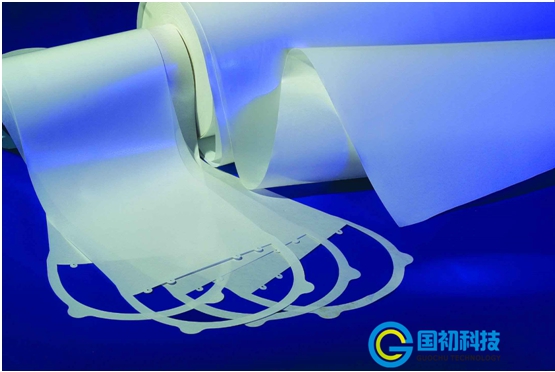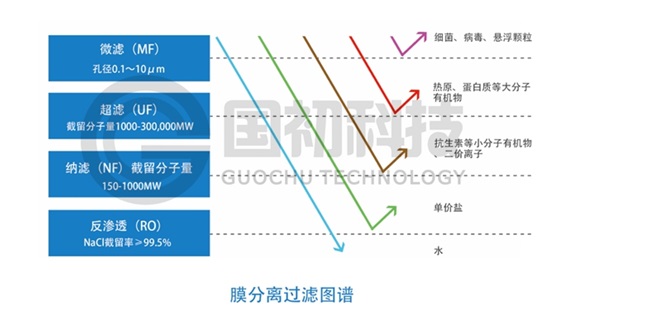Today, more than 3000 organic solvents are widely used in paints, pharmaceuticals, papermaking, chemical industry, petroleum and petrochemical, printing, textile and other fields, and the amount of organic solvents used in industrial production is usually not small. Common organic solvents include toluene, alcohols (methanol, ethanol, isopropanol), esters, ketones (acetone, cyclohexanone, methyl ethyl ketone, N- methyl pyrrolidone), acetonitrile, ethyl acetate, dimethylfomamide, aromatics, halogenated hydrocarbons, etc., most of these are toxic substances, and many of them are proved to have strong carcinogenic characteristics. Therefore, how to reuse organic solvents more effectively is particularly important.
At present, the traditional separation and purification processes used in organic solvent system, such as centrifugation, traditional dead end filtration, evaporation and so on, are all likely to cause organic solvents to volatilize and pollute the air, and the traditional process is difficult to automate, the operators often contact with organic solvents, and bring health hazards to the staff. Based on the experience in the application of membrane technology for many years,
GUOCHU Technology (Xiamen) Co., Ltd. has made a
pplication of advanced organic solvent nanofiltration membrane technology to organic solvent system, in this way, organic solvents can be controlled in a relatively closed system, and automatic control of equipment can be realized, so that operators can get access to organic solvents, so that the organic solvents can be better and safer for human industrial production, the membrane technology recovery of homogeneous catalysts is one of the applications.

Membrane is a selective barrier between two phases. It is a kind of polymer material, which can selectively separate material and liquid through pressure difference. The separation process is called membrane separation. Its difference to traditional filters is that membrane can be separated in molecular scope, and this process is a physical process without changing phase and adding auxiliaries. The thickness of the membrane is usually micrometer, and the membrane can be divided into microfiltration membrane, ultrafiltration membrane, nanofiltration membrane and reverse osmosis film according to the different pore sizes. The separation and rejection properties of all kinds of membranes in the process of cross flow filtration are distinguished by the pore size and the molecular weight of the membrane. Four kinds of membrane separation processes are simply illustrated as following figure: (The arrowhead reflection means that the substance could not be intercepted through the membrane).

The organic solvent is permeable through the solvent film under the pressure of 60bar, and then the molecular weight is blocked by the membrane which is larger than the membrane. There may be one or more solutes entering into the permeation through the membrane, while others are retained in the remnants. At present, the molecular weight of the membrane of special organic solvent system can be selected on150D, 200D, 300D, 500D, 900D and 20KD, GUOCHU Technology is currently developing a special separation membrane for more molecular weight.
Application characteristics of membrane technology in organic solvents:
-
The organic solvent resistant membrane can be operated at normal temperature or low temperature, and it does not affect the activity of the active substance;
-
The organic solvent resistant membrane can be used to filter and separate the active substances in the organic solvent, reduce the input and reduce the process;
-
Repeated filtration of organic solvent resistant membrane can increase the yield of products;
-
Multistage resistance of organic solvent resistant membrane can increase production scale;
-
The multistage series resistance of organic solvent resistant membrane can improve the purity of the product;
-
It can reduce the difficulty of integration of system engineering and improve the reliability of operation separation.
Tolerable solvents include:
-
methanol
-
Ethanol (alcohol)
-
Isopropanol
-
Butylene oxide
-
Toluene
-
Ethane
-
Heptane
-
Hexane
-
Acetone
-
Methyl ethyl ketone
-
N- methyl pyrrolidone
-
Acetonitrile
-
Ethyl acetate
-
DMF
-
Other solvents
-
Application areas:
-
Recovery of homogeneous catalyst
-
Mild API concentration and purification
-
Petroleum and petrochemical industry: removal of tar components from FCC raw materials
-
Petroleum and petrochemical industry: purification of condensate
-
Petroleum and petrochemical industry: dewaxing
-
Paint and paint: purification of waste liquid for cleaning production line, recovery of valuable solvents and coatings
-
Pharmaceutical industry: purification of concentrated drugs and intermediates in solvent media
-
Pharmaceutical industry: recovery of antibiotics and peptides
-
Natural oil and essential oil industry: fractionation of crude extracts
-
Natural oil and essential oil industry: concentration of natural compounds
-
Natural oil and essence oil industry: natural oil processing (dewaxing, concentrating)
-
Plant extraction industry: alcohol recovery and extract concentration
-
Recovery of dissolved chemicals
-
Recovery and purification of various solvents
-
Recovery of polymer binder and separation of pigment
-
Recovery of hydrocarbons in the cleaning process
-
Separation of other solvent systems
Contact:
Tel:+86 592 6514970
Email:market@guochukeji.com
Skype:18060902001
WhatsApp:18060902001
WeChat:18060902001
TM: guochukeji
QQ:1641011431



